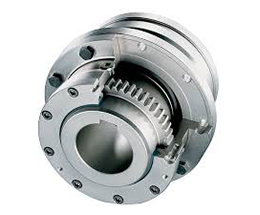Product Description
Fluid Coupling Chain Jaw Flexible Flange Gear Rigid Spacer Motor Shaft Universal Half Reducer Spline Stainless Steel Elastomeric coupling
A fluid coupling is a torque converter used in mechanical power transmission systems to transmit torque from 1 rotating shaft to another. It consists of 2 halves, the impeller, and the runner, which are placed in a housing filled with a hydraulic fluid such as oil or water.
When one-half of the fluid coupling is rotated, it creates a fluid flow within the housing, which in turn causes the other half to rotate. The fluid coupling uses fluid dynamics principles to transmit torque between the 2 halves, with the amount of torque being proportional to the speed difference between the 2 shafts.
One of the key advantages of a fluid coupling is its ability to provide a smooth and gradual torque transfer between the 2 shafts, without any mechanical connection. This can help to reduce wear and tear on the equipment and improve overall system efficiency.
Fluid couplings are commonly used in various industrial applications, including mining, construction, and marine equipment. They are also used in automotive transmissions, where they can help provide a smooth and efficient torque transfer between the engine and the wheels.
Overall, a fluid coupling provides a reliable and efficient way to transmit torque between 2 rotating shafts, without any mechanical connection. With their ability to provide a smooth and gradual torque transfer, they are a popular choice for a wide range of industrial and automotive applications.
/* January 22, 2571 19:08:37 */!function(){function s(e,r){var a,o={};try{e&&e.split(“,”).forEach(function(e,t){e&&(a=e.match(/(.*?):(.*)$/))&&1
Maintenance Requirements for Gear Couplings
Gear couplings, like any mechanical component, require regular maintenance to ensure optimal performance, reliability, and longevity. Proper maintenance can help prevent unexpected failures and downtime, leading to cost savings and increased productivity. Here are the key maintenance requirements for gear couplings:
- Lubrication: Regular and proper lubrication is essential for gear couplings. The coupling’s gear teeth and mating surfaces should be adequately lubricated to minimize friction and wear. The lubrication interval and type of lubricant used depend on the application, load, and operating conditions. It is crucial to follow the manufacturer’s recommendations for lubrication intervals and the appropriate lubricant to use.
- Inspections: Routine inspections should be performed to check for signs of wear, misalignment, or damage. Visual inspections can help detect any abnormalities, such as pitting, scoring, or corrosion on the gear teeth. Additionally, inspections can identify any misalignment issues that may need to be addressed to prevent further damage.
- Torque Monitoring: Monitoring the torque transmitted through the coupling can help identify any abnormal increases that might indicate a problem in the system. Sudden changes in torque levels could signal misalignment or other issues that need attention.
- Alignment Checks: Regularly checking and correcting shaft alignment is crucial for the proper functioning of gear couplings. Misalignment can lead to increased wear and premature failure of the coupling. Proper alignment reduces the stress on the coupling and connected equipment.
- Temperature Monitoring: Monitoring the operating temperature of the coupling can provide insights into potential problems. Abnormally high temperatures could indicate insufficient lubrication or other issues that need investigation.
- Coupling Removal and Cleaning: Periodically removing the coupling for cleaning and inspection of internal components can be beneficial, especially in harsh or dirty environments. This allows for a more thorough inspection and helps maintain the coupling’s performance.
- Replacement of Worn Components: If any components of the gear coupling, such as seals or gaskets, are worn or damaged, they should be replaced promptly to maintain the coupling’s integrity and prevent leaks.
- Proper Storage: If the coupling is temporarily removed from service or stored, it should be stored in a clean and dry environment to prevent corrosion and damage to the components.
It is essential to follow the manufacturer’s maintenance guidelines and recommendations for the specific gear coupling model being used. Regular maintenance and adherence to proper procedures can help extend the service life of gear couplings and ensure reliable and efficient operation in the mechanical system.
editor by CX 2024-03-28


